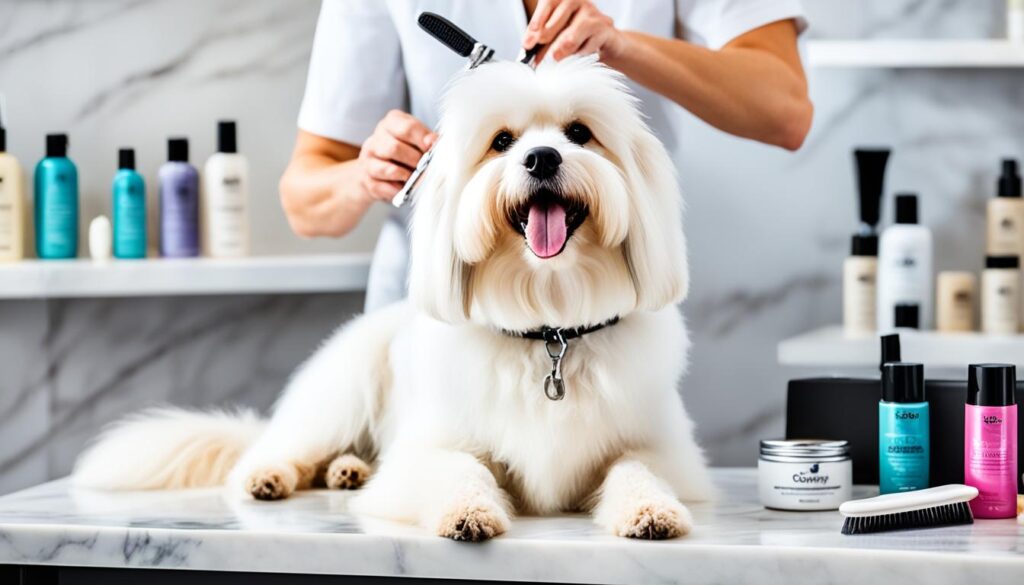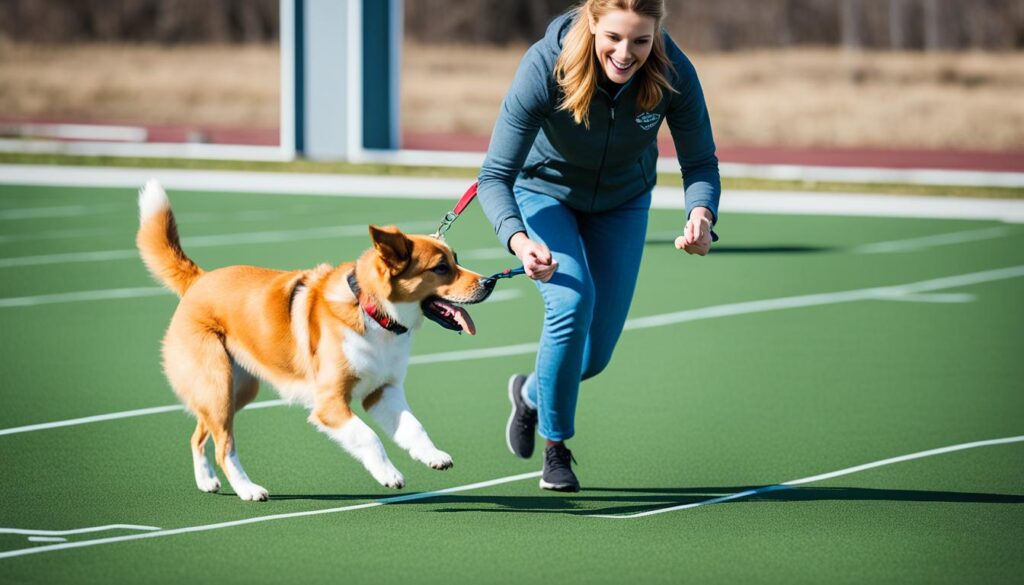As a pet owner, you strive to offer the finest for your beloved pet. We present a detailed guide on ways to boost your pet’s well-being. This guide covers everything from essential dental care for pets1 to the best food for their energy2. It also looks at why pets need to stay active and how mental games can help them1
Learn more about preventive vet care1, teaching your pet good behavior1, and making a safe home for them. We’ll explore caring for older pets1, how to plan for emergencies, and ways to grow close with your pet. We will show you how to use top-quality products to give your pet the best care possible. This will improve their health and happiness.
Key Takeaways
- Comprehensive pet health and wellness tips to elevate your pet’s life
- Expert-driven advice on dental care, nutrition, exercise, and grooming
- The importance of preventive vet care and educating your pet
- Tips for senior pet care and a safe, pet-friendly home
- Ways to strengthen the bond with your pet for a healthier life
The Importance of Routine Pet Dental Care
It’s vital to keep up with pet dental care. Why? Because the most common dental issue for dogs and cats is periodontal disease. By age 3, they might already have signs of it. This disease can harm the whole structure supporting their teeth.
Understanding Periodontal Disease
Graded from 0 to 4, periodontal disease is serious but often unseen below the gumline.3 Regular dental exams are key to catch and treat this in time.3 Anesthesia makes these checks less stressful for pets and more effective.3
The Benefits of Daily Tooth Brushing
Along with professional care, daily tooth brushing helps a lot.4 Begin this habit when your pet gets their adult teeth, usually at 6-9 months.4 It fights plaque and tartar, lowering the chance of dental issues.
Choosing the Right Dental Products
Look for pet dental products with the VOHC Seal of Acceptance.4 They are proven to work. Stay away from xylitol in dental items; it’s toxic to dogs and risky for cats.4 Getting your pet’s teeth checked by a vet each year is also very important.4
Make pet oral hygiene a regular part of your routine. Include daily brushing and use approved dental products. This way, you can prevent health issues and keep your pet’s mouth healthy for years.
Nutritional Needs: Fueling Your Pet’s Vitality
It’s vital to give your pet the right pet nutrition mix. This includes the right pet protein, pet vitamins, and pet minerals. It keeps them healthy and full of energy.
Animal vs. Plant-Based Proteins
Proteins from animals like meat, poultry, fish, and eggs are complete. That means they have all the essential amino acids pets need.5 Many plant-based proteins are incomplete because they lack some key amino acids.5 But, mixing different plant sources fills the gaps, giving a full amino acid set.5
Essential Vitamins and Minerals
Pets also need key high-quality pet protein, vitamins, and minerals.6 It’s best to feed them balanced, approved pet food. Look for AAFCO standards on the label to be sure they get everything they need.6 If you make pet food at home, talk to a vet nutritionist. They will tell you which supplements are safe to use. This helps avoid any nutrition problems for your pet.6

Exercise and Mental Stimulation
Keeping your pet active and mentally engaged is key to their health. It’s important to adjust their exercise based on their age, breed, and health. This ensures they get the right amount of physical activity.7
Tailoring Exercise Routines
All dogs need daily exercise, like 20 minutes of play and 1-2 walks.7 Working dogs, like police or service breeds, enjoy activities that fit their skills.7 Yet, how much exercise a dog needs also differs.7 Vets can help plan the perfect exercise routine for your pet.7 Mix it up with short activities during the day for a well-balanced plan.7
Enrichment Activities for Mental Stimulation
Along with regular walks, use puzzle toys and training to challenge your pet’s mind.89 Training keeps dogs from getting bored and prevents bad habits.9 It also makes them smarter and better at solving problems.9 Plus, well-trained dogs enjoy being active, staying healthy and lively.9
Meeting your pet’s physical and mental needs creates a happier and healthier pet.789
Grooming Routines for Healthy Coats and Skin
Keeping a pet grooming routine is key to a pet’s healthy pet coats and pet skin. Regular grooming like brushing, bathing, and nail trimming keeps your pet’s coat shiny and their skin clean. It stops matting and skin problems by distributing natural oils well.10 This helps your pet look and feel great.
Some dog types, like Yorkshire Terriers, need their hair trimmed regularly. This is because their hair keeps growing and doesn’t fall out.11 Other dogs, such as Siberian Huskies, shed heavily a couple of times a year. This results in a lot of hair coming off.
Short-haired dogs, though, shed less throughout the year. They also don’t have a thick undercoat.11
Every dog benefits from being brushed often. This removes loose hair and dead skin which is good for their skin and your home.11 Dogs with long or curly hair especially need daily brushing to stay tangle-free. Regular brushing reduces the amount of floating fur and dog dander in your home.
| Grooming Recommendation | Explanation |
|---|---|
| Bathing Frequency | Dogs usually need a bath every six to eight weeks, depending on the breed. Dogs that shed less may not need it as often. But, dogs that are allergic might need more baths.11 |
| Bathing Technique | Bathe your dog in warm water for a pleasant experience and for better cleaning. Let medicated shampoo sit on the dog for 5-10 minutes before rinsing.11 Avoid using human shampoo, as it’s too strong for a dog’s skin. |
| Coat Length | In the summer, it’s best to cut long-haired dogs’ coats short. But, make sure to leave at least 1″ (2.5 cm) to protect their skin from the sun. |
| Coat Length | Some dogs might face a rare issue if their hair is cut too short. It can cause a delay in how quickly their hair grows back, up to two years in some breeds. |
Follow these pet grooming tips to keep your pet’s pet coat health and pet skin health top-notch. Regular vet check-ups and using good supplements like Kradle can also help keep your pet’s health in check.10

Preventative Veterinary Care: A Proactive Approach
Taking care of our pets’ health needs a proactive approach. This includes regular check-ups and screenings. These help catch health problems early and ensure pets’ vaccines are current.1 This approach also includes protecting pets from parasites.
Spotting issues early leads to better treatment and outcomes for pets.
Regular Check-Ups and Screenings
For healthy adult dogs, scheduling regular wellness checks is key to their well-being.1 Puppies and older pets need more visits to check on their special needs.1 These visits let vets keep a close eye on pets’ health, catch problems early, and start prevention.
Vaccinations and Parasite Prevention
Making sure pets have their core vaccinations is vital. This includes shots like rabies and distemper combinations.1 Rabies shots start with two doses a year apart, then boosters every three years. Distemper shots begin for puppies at six to eight weeks, with regular boosters.1
Don’t forget about regular deworming and heartworm medicine.1 A full plan of check-ups, screenings, shots, and preventing parasites keeps pets well and content for their whole life.
Special care is needed for the joints and mobility of big dog breeds. This helps manage their growth and weight.12 Supplements like omega-3s for the skin, and prebiotics for the gut, also help.12
It’s important to talk to your vet about possible health issues for your pet’s breed. Genetics can make some breeds prone to certain problems.12 By teaming up with your vet, you can keep your pet healthy through preventative care.
Behavior Training: Building a Well-Rounded Pet
Effective pet behavior training is key to having well-adjusted and confident pets. It’s important to use positive reinforcement techniques in training. These methods have been proven better than harsh punishment. They help change a pet’s behavior for the better.9 By rewarding the behaviors we want and guiding pets through fun activities, owners strengthen their bond. This also helps with good behavior and keeps pets mentally active.9
Positive Reinforcement Techniques
Using positive reinforcement, like treats or praise, can shape a pet’s actions well.9 This method not only praises good actions but also makes the pet and owner connection stronger.9 It helps pets learn important commands, boosts their social skills, and makes them well-rounded and confident.
Addressing Anxiety and Stress
Helping pets deal with anxiety and stress is just as important as training them. It’s key for their mental health and well-being.13 Setting up safe and calming spaces, using soothing scents, and giving them interactive toys can ease their stress. It also gives them a sense of security.13 Regular training with positive reinforcement is also a big help. It manages their stress and boosts their confidence even more.14 By tackling these issues early on, pet owners set their pets up for a happy and well-adjusted life.

Putting effort into pet behavior training and helping them cope with anxiety and stress can make a big difference. This way, pet owners ensure their pets are happy, well-adjusted, and living their best life.14913
Pet Health and Wellness Tips: A Comprehensive Guide
This complete guide takes a 360-degree look at boosting your pet’s health and wellness. It pulls advice from top experts. And it dives deep into various subjects. So, you can provide top-notch care for your pet.
Inside, you’ll find tips on essential pet health and wellness. Plus, there’s a pet care guide for everything you need to know. You’ll learn about keeping their teeth clean, the best food to feed them, how to keep them active and happy, and much more.
Use these tips and focus on your pet’s well-being. This way, you’ll make your pet’s life better and more joyful.
| Pet Health and Wellness Topics | Key Considerations |
|---|---|
| Dental Care | |
| Nutrition |
|
| Exercise and Mental Stimulation | |
| Grooming |
Maintaining healthy coats and skin through consistent grooming practices |
| Preventative Veterinary Care | |
| Behavior Training | |
| Pet-Friendly Home |
|
| Senior Pet Care | |
| Emergency Preparedness |
|
| Human-Animal Bond |
Follow these pet health tips and pet wellness tips for a better life with your pet. With this guide, you’ll boost the quality of time spent with your furry friend. Using these pet owner resources, focus on your pet’s well-being. The result? A future that’s happier, healthier, and full of vitality.
Creating a Pet-Friendly Home Environment
Crafting a living space where your pets feel safe and cozy is vital. You should focus on pet-friendly home features. Also, by adding pet safety steps, you help your pets be happy.
Safety Considerations
Keeping your pets safe is key. This means making sure they can’t reach dangerous things like electrical cords. Adding baby gates and pet-proof trash cans is smart, too. These steps lower the chances of pets getting hurt or sick from things they shouldn’t touch.17
Also, consider putting childproof locks on places they shouldn’t get into. This helps keep them safe from harm.17
Promoting Comfort and Relaxation
Making a comfortable place for pets is about more than just safety. It’s also about pet comfort and relaxation. Use soft bedding and pet-friendly furniture. This makes them feel at home and keeps them from hurting themselves on sharp edges. Add fun toys and chews to keep them happy and not damaging your home.
Having special areas for play and relaxation indoors and outdoors boosts their well-being. It also makes them feel more content.18
Making your home safe and comfy for pets is the goal. By focusing on both pet safety and pet comfort, you create a peaceful place. A place where your pets are not just happy but truly thrive.1718
Senior Pet Care: Addressing Unique Needs
As pets get older, their care needs change. They need more attention to stay healthy and happy.19 It’s crucial to focus on special issues like moving around, dealing with pain, and eating the right foods.
Mobility and Pain Management
Older pets often find it hard to move. They may feel pain or discomfort.19 For example, arthritis is a common issue. But, it can be helped with the right supplements, meds, and special beds. These steps can ease their pain and improve their life quality.20
Dietary Adjustments
Pets need different food as they age.19 Moving to a diet made for seniors, rich in protein but fewer calories, is key. It keeps them healthy and energetic. A specialist vet can guide what to feed them for the best nutrition.
By taking action early, pet owners can make sure their older pets get the right care.201921 This means watching for any changes in how they move, handle pain, and eat, and teaming up with vets. This way, senior pets can live fully and happily in their later years.

Emergency Preparedness: Keeping Your Pet Safe
When disasters strike, our pets rely on us to keep them safe. It’s vital to prepare ahead of time. This way, we can help our pets stay safe during tough times.22
First Aid Essentials
Having a pet first aid kit ready is key in emergencies. Put aside at least three days’ worth of food23 and water23 for them, as well as for yourself. Keep all their medicines in a waterproof box23. This makes sure they won’t miss any doses when it counts. Don’t forget to check your first aid items’ expiry dates every six months23. This step is crucial for your pet’s care.
Disaster Planning and Evacuation
Your disaster plan should include how to evacuate and where to find safety. Shockingly,22 86% of pet owners lack a pet-specific emergency plan. Only 36% have an emergency pet kit. By getting your pet microchipped22 and keeping recent photos together23, you boost the chances of finding them if you get separated. A sanitization kit for your pet23 also keeps them comfy and healthy post-disaster.
Also, consider taking a Pet First Aid & CPR class from Anti-Cruelty for $5023. Their specialists provide lots of tips for emergency prep23. It’s a great way to be more ready.
The Human-Animal Bond: Enhancing Well-Being
The connection between people and their pets brings many health benefits. Playing with animals can ease stress, lower blood pressure, and lift spirits.24 Pets also offer comfort, especially to those going through tough times like sickness or sadness.24
Physical and Mental Health Benefits
Research shows a strong link between owning a pet and better health. Having pets can make people physically and mentally healthier over time. This connection also leads to better mental health.24
There’s even early evidence that animals can help kids with autism improve their social skills.24 Having a pet can make growing older healthier by keeping people more active. It also helps cut down on anxiety, stress, and pain.24
Strengthening the Pet-Owner Connection
Understanding and strengthening the bond with pets can make both owners and pets happier. Knowing about this bond makes pet owners more attached to their pets and their vets. It also makes workplaces friendlier for pets and their owners.24
With knowledge of the human-animal bond, workplace benefits get better for 83% of people. Without this knowledge, only 61% see these benefits.25 Most people (67%) would stay at a pet-friendly job if they understood this bond. This is more than the 42% of people who don’t know about it.25
Thus, by caring for the human-animal bond, pet owners can improve their own and their pets’ health. This creates a cycle of well-being for everyone involved.24
Conclusion
This guide has loads of tips on how to give pets a high-end lifestyle that’s also healthy. It covers dental care14, good food14, exercise14, keeping clean14, seeing the vet often14, training14, making a home pet-friendly26, caring for senior pets, preparing for emergencies27, and bonding with them26.
By using these tips, pet parents can help their pets be their best. They’ll also build a strong, loving connection with their pets. This holistic approach means treating pets like royalty. Their welfare improves, and the relationship between human and animal grows deeper.26
Focusing on your pet’s health and following this guide can really change their life. Your pets will not just be okay; they’ll thrive and have a happy, meaningful life.1427
FAQ
What are the main topics covered in this comprehensive pet health and wellness guide?
Why is regular dental care important for pets?
What is the difference between animal-based and plant-based proteins for pets?
How can pet owners provide both physical and mental stimulation for their pets?
Why are regular veterinary check-ups important for pets?
How can behavior training help create well-rounded pets?
How can pet owners create a safe and comfortable home environment for their pets?
What are some key considerations for caring for senior pets?
How can pet owners prepare for emergencies and natural disasters?
What are the benefits of the human-animal bond?
Source Links
- https://vetster.com/en/wellness/preventative-wellness-tips-for-your-dog
- https://vcahospitals.com/know-your-pet/topics/care-wellness
- https://www.avma.org/resources-tools/pet-owners/petcare/pet-dental-care
- https://www.animalleague.org/blog/tips/pet-health-and-wellness/importance-of-dental-health/
- https://www.petspurest.com/blogs/pets-purest-blog/pet-nutrition-guide-how-to-best-support-your-pet-s-health
- https://lovejoyspetfood.co.uk/blogs/news/understanding-your-dogs-nutritional-needs-a-guide-for-pet-parents
- https://www.petcgfk.com/mental-physical-stimulation-is-your-dog-getting-what-they-need/
- https://mercerstreetvet.com/9-ways-to-stay-active-with-your-pet/
- https://dogdaygetaway.com/train-dog-better-health/
- https://kradlemypet.com/blogs/calming-dog-blog/pampered-dog-skin-coat-wellness
- https://vcahospitals.com/know-your-pet/grooming-and-coat-care-for-your-dog
- https://yourpetandyou.elanco.com/us/health-and-care/proactive-veterinary-healthcare
- https://www.dodgecentermn.com/premium/napsnet/stories/a-dog-trainers-top-tips-to-support-pets-through-life-stages,69285
- https://noahsarktx.com/pet-health-and-wellness-tips-a-guide-for-responsible-pet-owners/
- https://www.canadavetcare.com/blog/pet-health-and-wellness-at-home/
- https://www.ballantynevet.com/blog/a-comprehensive-guide-to-pet-health-and-wellness-tips
- https://noahsarktx.com/a-guide-to-pet-safety-your-home-creating-a-safe-environment/
- https://petprosservices.com/tips-for-pet-owners-creating-a-pet-friendly-home-environment-with-pet-pros-services/
- https://lagunabeachvet.com/caring-for-senior-pets-nurturing-their-golden-years/
- https://www.dvm360.com/view/wellness-and-mobility-tips-in-honor-of-national-adopt-a-senior-pet-health-month
- https://www.petfinder.com/dogs-and-puppies/health-wellness/lifespan/senior-dog-care/
- https://firstrespondersfoundation.org/emergency-response-and-animal-safety-tips-for-pet-owners/
- https://anticruelty.org/pet-library/emergency-preparedness-0
- https://www.zoetis.com/_assets/pdf/human-animal-bond-report/zoetis_humananimalbond_report_032024.pdf
- https://habri.org/research/mental-health/workplace-wellness/
- https://thenaughtydog.com/blogs/news/essential-pet-health-and-wellness-tips-every-dog-owner-should-know
- https://w2w.pet/blog/5-essential-tips-for-maintaining-optimal-pet-wellness
